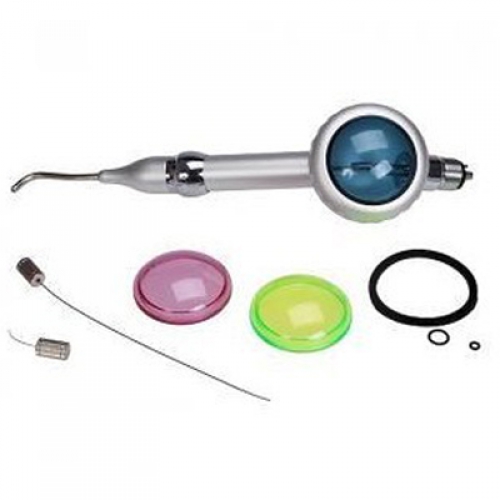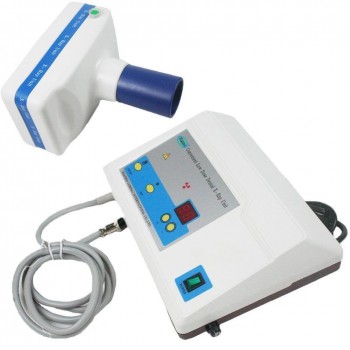Use of the dental air polisher for stain removal involves three steps: patient selection and preparation, clinician preparation, and the actual clinical technique. Air polishing should follow a careful review of the patient’s medical and dental history, and a thorough examination of the oral hard and soft tissues. Indications and contraindications, effects on hard tissues, restorations, safety, and alternative uses should be reviewed prior to treatment planning the use of the air polisher.

Preparation of the patient should include an explanation of the procedure, removal of contact lenses, an anti-microbial rinse, application of a lubricant to the lips, placement of safety glasses or a drape over the nose and eyes, and placement of a plastic or disposable drape over the patient’s clothing. Operators should use universal precautions, including protective apparel, a face shield or safety glasses with side shields, gloves, and a well-fitting mask with high-filtration capabilities.
During periodontal surgery, air polishers can prepare root surfaces detoxify them effectively and efficiently, and leave a uniformly smooth root surface that is clean and free of diseased tissues. Dentinal tubules are then occluded, which may result in decreased sensitivity. Superior growth and vitality of human gingival fibroblasts was evident when ultrasonic scaling was followed by air polishing, compared to ultrasonic scaling alone. Air polishing produced root surfaces that were comparable to manually rootplaned surfaces, and provided better access to furcations. Tissue healing following air polishing was comparable to that achieved by hand instrumentation in root preparation during periodontal flap surgery.
Research findings also support the use of air polishing with orthodontic patients. It is the most efficient and effective method for plaque and stain removal around orthodontic brackets, bands, and arch wires. It is not contraindicated on orthodontic bracket composite resin adhesive systems.
In restorative dentistry, air polishers have provided stronger composite repairs than traditional etching gels. They also are superior to rubbercup polishing in preparing occlusal surfaces for etching prior to sealant placement because the rubber cup forces debris into the fissures. Air polishing of occlusal surfaces also allows for deeper penetration of the sealant resin into the enamel surface than rubber cup and pumice cleaning of the fissures. Air polishers also have enhanced sealant bond strength compared to traditional polishing with a low-speed handpiece, bristle brush, pumice, and water.
Oral health care professionals have a responsibility to patients to engage in life-long learning in order to provide the most contemporary clinical care. Air polishing has been studied extensively and, when used appropriately, provides a safe, efficient and contemporary approach to achieving a variety of treatment goals.
